This article was co-authored by Lydia Shedlofsky, DO and by wikiHow staff writer, Jennifer Mueller, JD. Dr. Lydia Shedlofsky is a Resident Dermatologist who joined Affiliated Dermatology in July of 2019 after completing a traditional rotating internship at Larkin Community Hospital in Miami, Florida. She earned a Bachelor of Science in Biology at Guilford College in Greensboro, North Carolina. After graduation, she moved to Beira, Mozambique, and worked as a research assistant and intern at a free clinic. She completed a Post-Baccalaureate program and subsequently earned a Master's Degree in Medical Education and a Doctorate of Osteopathic Medicine (DO) from the Lake Erie College of Osteopathic Medicine.
There are 8 references cited in this article, which can be found at the bottom of the page.
wikiHow marks an article as reader-approved once it receives enough positive feedback. In this case, 100% of readers who voted found the article helpful, earning it our reader-approved status.
This article has been viewed 382,525 times.
The Bartholin's gland provides the fluid that lubricates your vagina—if an opening gets clogged, that fluid can back up, causing a lump on your vulva.[1] While it's normal to feel self-conscious, this type of cyst isn't harmful in and of itself and usually goes away on its own with minimal effort on your part. Read on to learn about simple, at-home treatments you can use to help get rid of the cyst as soon as possible. You'll also learn about the signs of possible infection and when you need to get your doctor involved.
Things You Should Know
- Soak in warm water for 15-20 minutes 3 or 4 times a day for 3-4 days to encourage the cyst to drain on its own.
- Leave the cyst alone and it will usually go away by itself. Don't squeeze it, poke it, or attempt to drain it yourself.
- Seek medical treatment if your cyst is swollen or painful, as it could be infected and require prescription antibiotics to clear it up.
- If you have surgery to drain the cyst, keep the area clean and refrain from vaginal penetration for 4 to 6 weeks until you've completely healed.
Steps
At-Home Treatment
-
1Take a sitz bath several times a day for at least 3-4 days. Run warm water in the bath—just enough to cover your lower body when you're sitting. Sit in the bath for 15-20 minutes, then get out and pat yourself dry. This ensures the entire area surrounding the cyst is clean, which can prevent infection. The warmth also encourages the cyst to drain on its own.[2]
- Add a scoop or two of Epsom salt or sitz salt to make your sitz bath even more beneficial. The salt helps calm inflammation and promotes drainage.
-
2Hold a warm compress to the area to encourage drainage. Soak a clean cloth in warm water, then hold it to the area for 15-20 minutes. The heat encourages the cyst to drain. This can be helpful if you're not able to take a full sitz bath—for example, if you're at work and only have a few minutes but want to help your cyst heal.[3]
- A warm compress can also provide relief if the cyst is causing pain or soreness, or if the surrounding tissue is sensitive or inflamed.
- Don't add anything to your compress—just water! The tissue around your vagina is extremely sensitive and essential oils, fragrances, and other substances could make your situation worse.
Advertisement -
3Take an over-the-counter (OTC) pain reliever if you need to. Bartholin cysts can occasionally be painful or uncomfortable and an OTC pain reliever, such as naproxen (Aleve, Naprosyn), ibuprofen (Advil, Motrin), or acetaminophen (Tylenol), can help you feel better. If your cyst causes you pain when you're walking, sitting, or doing certain activities, take a pain reliever—you don't need to suffer.[4]
- Follow the dosage instructions on the bottle and don't exceed the maximum dosage. If OTC pain relievers aren't helping enough, call your doctor.
-
4Avoid any sort of vaginal penetration while the cyst is there. This includes penetrative sex, but it also includes using tampons or doing anything else that puts pressure on your vulva and the walls of your vagina. This could cause the cyst to become infected and rupture, which can trigger a life-threatening immune response called "sepsis." You want the cyst to drain naturally, not become infected.[5]
- Avoid non-penetrative activities that cause pressure as well. For example, riding horseback can put pressure on your vulva and cause the cyst to rupture, even though there's no penetration involved.
- Also avoid bath or skin products with fragrances or chemicals that might cause further irritation to the cyst and the surrounding tissue.[6]
- You can't transmit a Bartholin cyst to others—that's not why you're avoiding intercourse. At the same time, they can be caused by an underlying sexually-transmitted infection (STI), so go ahead and get tested if you're concerned about that.
-
5Leave it alone for 3-4 days (and then, call your doctor if it doesn't improve). Since Bartholin cysts tend to drain and heal on their own, the best thing you can do is let it be. Do what you can to keep it from getting infected, including sitz baths, and let nature take its course.[7] After 3 or 4 days, if you're not seeing any improvement, go ahead and give your doctor a call.[8]
- If your symptoms get worse and you're experiencing severe pain or a fever over 100 °F (38 °C), the cyst may be infected—get medical treatment as soon as possible.[9]
- Your doctor can usually diagnose a Bartholin cyst with a simple exam. They might ask you how long you've been having symptoms or if you've ever had a Bartholin cyst before.[10]
- Depending on your sexual activity and medical history, your doctor might recommend that you get tested for STIs. This isn't because a Bartholin's cyst is evidence of an STI—just that sometimes these cysts can be caused by STIs.[11]
Getting Medical Treatment
-
1Take a full course of antibiotics to clear any infection. If your cyst is infected—this is also called a Bartholin gland abscess—your doctor will prescribe a full-spectrum antibiotic to clear the infection. Make sure you take the full course, even if the symptoms of infection go away. Otherwise, the infection could quickly return.[12]
- If the infection responds to the antibiotics, your cyst will typically drain on its own once the infection is gone. If it doesn't, your doctor might recommend surgical drainage.
-
2Get your cyst drained if it persists after antibiotic treatment. In most cases, the cyst will drain itself once the infection has cleared—but sometimes it doesn't. If its existence is uncomfortable or painful for you, your doctor might recommend surgical drainage.[13]
- Surgical drainage is typically an in-office procedure and can be performed with local anesthesia or twilight sedation. You'll go home soon after, although you should probably take it easy for the next day or two after.
- Talk to your doctor about what to expect from the procedure—they can answer any questions you might have and put your mind at ease.
-
3Consider a marsupialization procedure if you have recurring cysts. This permanent procedure creates an opening to keep the gland draining properly so the blockages that cause cysts don't continue to occur. If you feel as though you're having problems with Bartholin cysts more often than not—say, the cyst is gone for only a few weeks and then comes back—this procedure might be beneficial for you. Talk to your doctor about it and see what they recommend.[14]
- Marsupialization is a little more involved than surgical drainage. You might go home with a catheter inserted in the opening—that's just to make sure the incision doesn't close up in the first few days after surgery.
-
4Plan surgery to remove your Bartholin's gland if treatments aren't effective. If you've had cysts surgically drained several times and they keep coming back, your doctor might recommend gland removal as a last resort. This procedure is extremely rare in practice and typically isn't recommended at all for patients under 40 years of age.[15]
- Gland removal is typically performed in the hospital under general anesthesia. While it's typically same-day surgery, your doctor might want you to stay there overnight to recover.[16]
Recovering After Surgery
-
1Take sitz baths as recommended by your doctor or surgeon. Within a day or two after surgery, sit in a tub of warm water for 15-20 minutes. Your doctor will tell you how often you need to do this—usually, at least 3-4 times a day.[17]
- The sitz baths help keep the surgical site clean and prevent infection. Don't skip them! They're an extremely important part of your recovery and healing process.
-
2Refrain from vaginal penetration for 4-6 weeks. If you have a catheter, vaginal penetration is a no-no until the catheter is removed, at a minimum. For more extensive surgery, you're looking at longer. This includes not only penetrative sex but also using tampons.[18]
- Returning to vaginal penetration after a surgical procedure might be uncomfortable. Just take it slow and use additional lubrication if necessary.
-
3Take pain medication as needed. OTC pain relievers may be enough for you, but your doctor might also prescribe narcotic pain relievers. If you've had any kind of surgical procedure, those might work better than OTC pain relievers.[19]
- If you're taking narcotic pain relievers, don't drive or do anything that requires careful attention while you're on the medication.
- It's a good idea to have someone with you while you're taking narcotic pain relievers, just to make sure you stay safe.
-
4Maintain good personal hygiene practices. Keeping the general area clean and always using condoms when you have sex is good practice anyway—but if you've had a Bartholin cyst, hygiene is even more important. Doctors don't know exactly what causes Bartholin cysts, but it does seem like good hygiene can help prevent them from returning.[20]
- Since Bartholin cysts can be linked to STIs, practicing safe sex could be one way to prevent Bartholin cysts or keep them from returning.[21]
Expert Q&A
Did you know you can get premium answers for this article?
Unlock premium answers by supporting wikiHow
-
QuestionHow can I prevent Bartholin cysts?
 Lydia Shedlofsky, DODr. Lydia Shedlofsky is a Resident Dermatologist who joined Affiliated Dermatology in July of 2019 after completing a traditional rotating internship at Larkin Community Hospital in Miami, Florida. She earned a Bachelor of Science in Biology at Guilford College in Greensboro, North Carolina. After graduation, she moved to Beira, Mozambique, and worked as a research assistant and intern at a free clinic. She completed a Post-Baccalaureate program and subsequently earned a Master's Degree in Medical Education and a Doctorate of Osteopathic Medicine (DO) from the Lake Erie College of Osteopathic Medicine.
Lydia Shedlofsky, DODr. Lydia Shedlofsky is a Resident Dermatologist who joined Affiliated Dermatology in July of 2019 after completing a traditional rotating internship at Larkin Community Hospital in Miami, Florida. She earned a Bachelor of Science in Biology at Guilford College in Greensboro, North Carolina. After graduation, she moved to Beira, Mozambique, and worked as a research assistant and intern at a free clinic. She completed a Post-Baccalaureate program and subsequently earned a Master's Degree in Medical Education and a Doctorate of Osteopathic Medicine (DO) from the Lake Erie College of Osteopathic Medicine.
Dermatologist
Warnings
- Never squeeze, poke, or attempt to drain a Bartholin cyst on your own. It could make your symptoms worse and could lead to infection.[23]⧼thumbs_response⧽
- If you're postmenopausal or over 40, a Bartholin cyst could be a symptom of a more serious issue. Call your doctor as soon as possible and have them take a look at it.[24]⧼thumbs_response⧽
References
- ↑ https://medlineplus.gov/ency/article/001489.htm
- ↑ https://familydoctor.org/condition/bartholins-gland-cyst/
- ↑ https://www.nhs.uk/conditions/bartholins-cyst/treatment/
- ↑ https://www.healthnavigator.org.nz/health-a-z/b/bartholin-s-cyst/
- ↑ https://familydoctor.org/condition/bartholins-gland-cyst/
- ↑ Lydia Shedlofsky, DO. Dermatologist. Expert Interview. 11 November 2020.
- ↑ https://medlineplus.gov/ency/article/001489.htm
- ↑ Lydia Shedlofsky, DO. Dermatologist. Expert Interview. 11 November 2020.
- ↑ https://medlineplus.gov/ency/article/001489.htm
- ↑ https://www.ncbi.nlm.nih.gov/books/NBK532271/
- ↑ https://www.aafp.org/pubs/afp/issues/2003/0701/p135.html
- ↑ https://www.healthnavigator.org.nz/health-a-z/b/bartholin-s-cyst/
- ↑ Lydia Shedlofsky, DO. Dermatologist. Expert Interview. 11 November 2020.
- ↑ https://medlineplus.gov/ency/article/001489.htm
- ↑ https://www.healthnavigator.org.nz/health-a-z/b/bartholin-s-cyst/
- ↑ https://familydoctor.org/condition/bartholins-gland-cyst/
- ↑ https://medlineplus.gov/ency/article/001489.htm
- ↑ https://medlineplus.gov/ency/article/001489.htm
- ↑ https://medlineplus.gov/ency/article/001489.htm
- ↑ https://familydoctor.org/condition/bartholins-gland-cyst/
- ↑ https://www.healthnavigator.org.nz/health-a-z/b/bartholin-s-cyst/
- ↑ https://familydoctor.org/condition/bartholins-gland-cyst/
- ↑ https://my.clevelandclinic.org/health/diseases/17737-bartholin-cyst
- ↑ https://my.clevelandclinic.org/health/diseases/17737-bartholin-cyst
About This Article
Before you try to get rid of a bartholin cyst, get a diagnosis from your doctor to make sure it's nothing more serious. Then, take Sitz baths at least 3 times a day, which is when you put just enough water in the bath to cover your vagina and buttocks. During each bath, sit in the water for 10 to 15 minutes to help keep the area around the cyst clean and encourage it to drain naturally. If you’re experiencing pain, take over-the-counter medication. You should seek medical attention if your cyst doesn’t clear up after several days of Sitz baths, since this could mean it's infected. After your doctor has examined you, they may recommend you have the cyst surgically drained, which can usually be done in a doctor’s office with a local anesthetic. For tips from our medical co-author on how to treat an infected cyst, keep reading!
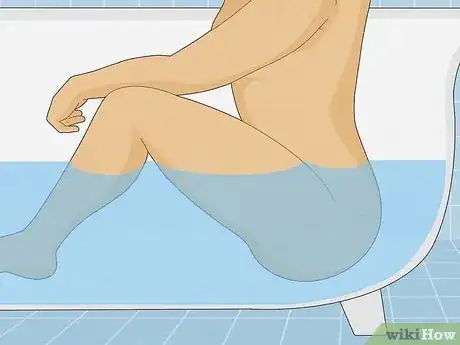


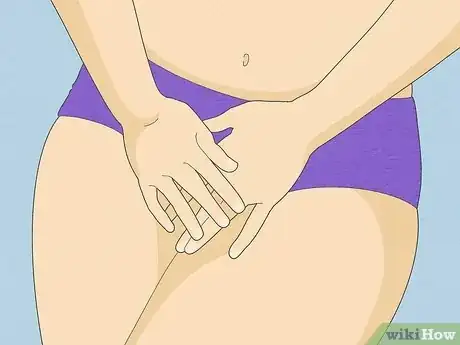

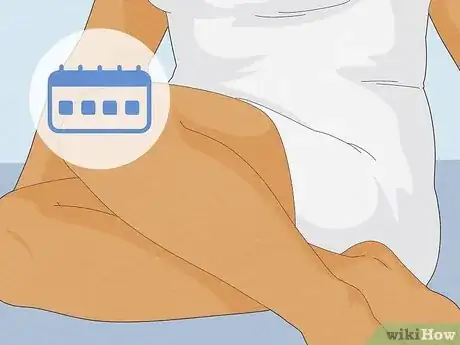

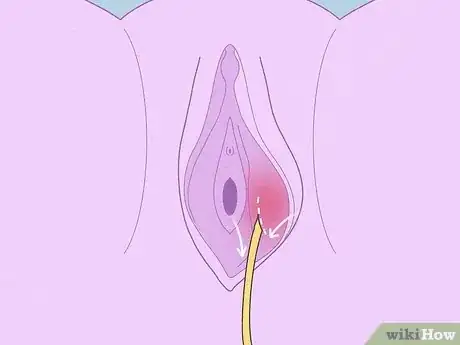


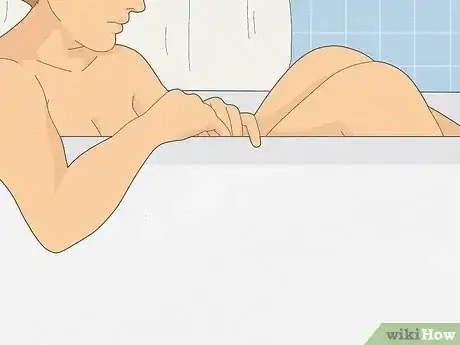

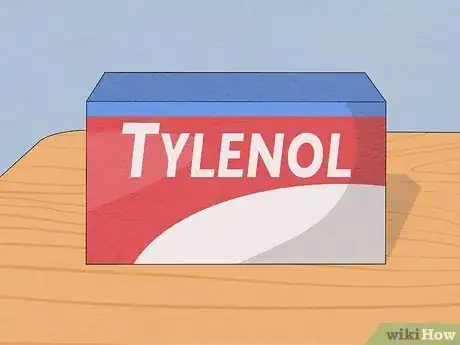

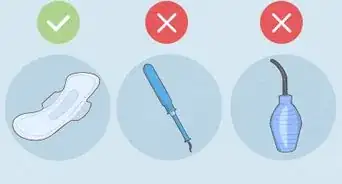




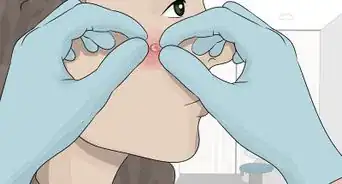
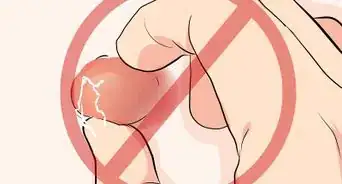

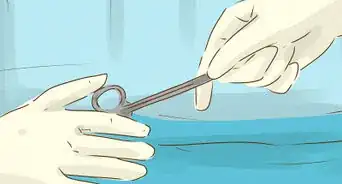
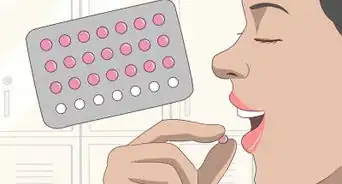
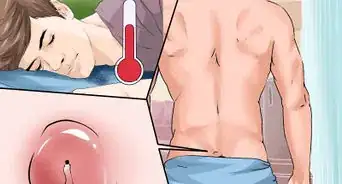

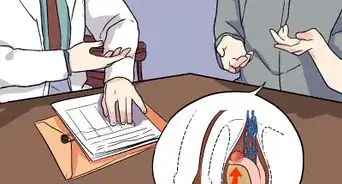
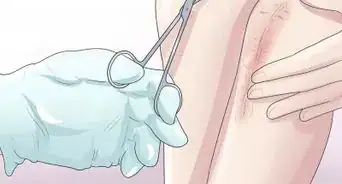








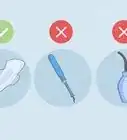


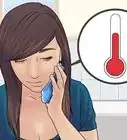



































Medical Disclaimer
The content of this article is not intended to be a substitute for professional medical advice, examination, diagnosis, or treatment. You should always contact your doctor or other qualified healthcare professional before starting, changing, or stopping any kind of health treatment.
Read More...